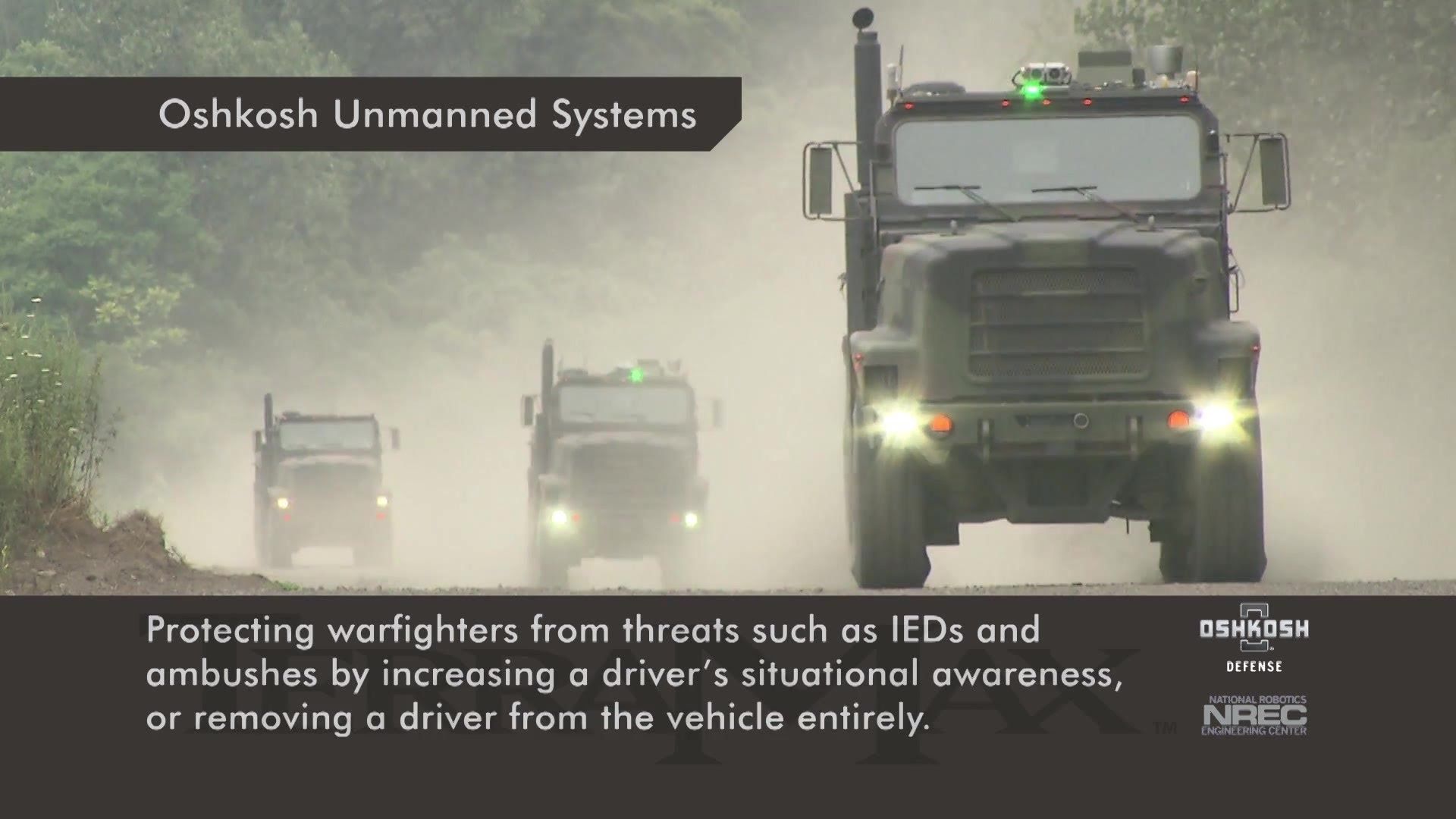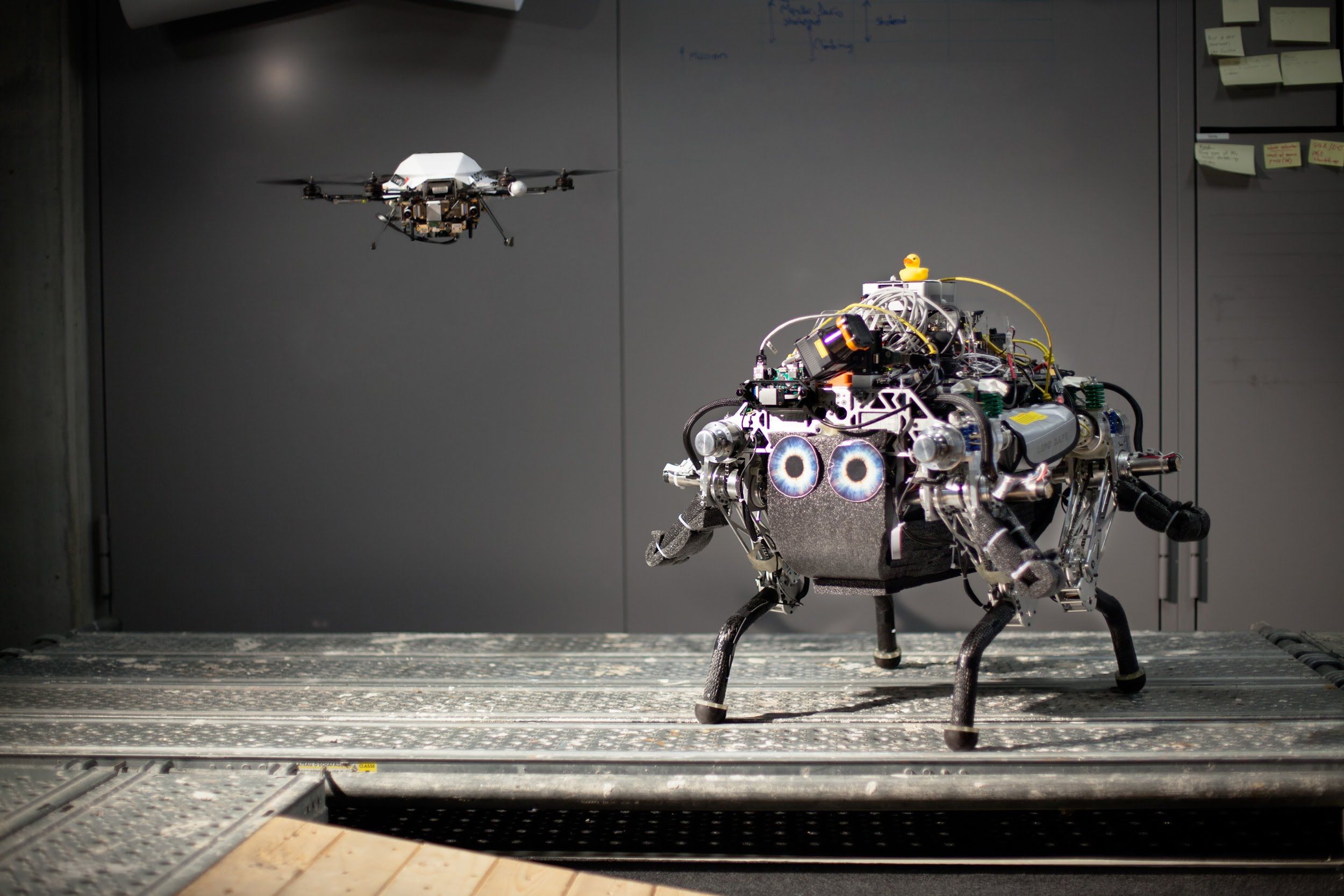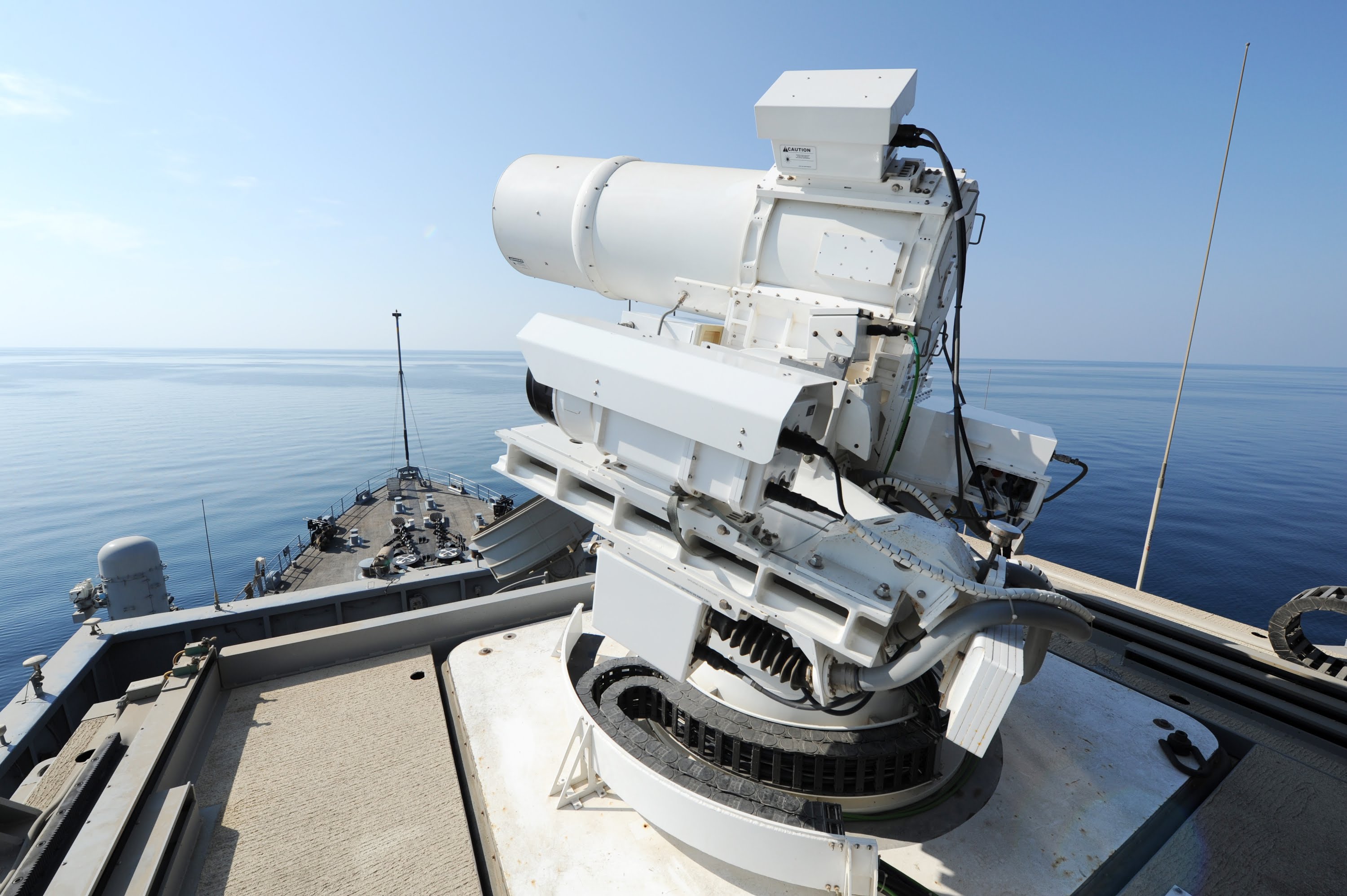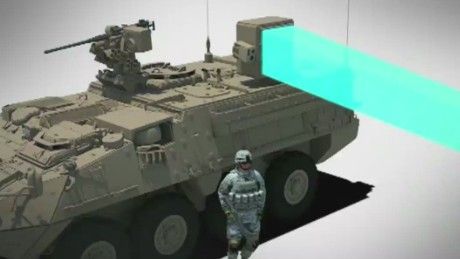Oct 16, 2015
The 5 Coolest Robots at the Biggest US Land Warfare Show
Posted by Dan Kummer in categories: military, robotics/AI
Autonomous systems for land, sea, and sky prowled the floor at this week’s AUSA conference in Washington.

Autonomous systems for land, sea, and sky prowled the floor at this week’s AUSA conference in Washington.

https://youtube.com/watch?v=zX4XXLb_Vuw
While the US military continues to develop new and awesome ways of blowing aerial drones to smithereens, not many of these systems can easily be adapted to use in the civilian realm. That’s why Battelle has developed the DroneDefender, a shoulder-mounted rifle that knocks UAVs offline with a barrage of radio waves.
“It can help us in numerous settings, from the White House lawn to bases and embassies overseas; from prisons and schools to historic sites,” Alex Morrow, technical director on the project, said in a statement. “It easily and reliably neutralizes the threat.” The weapon weighs roughly 10 pounds and can target drones up to 400 meters away. When the trigger is pulled, the gun emits a blast of electromagnetic energy tuned to the most common GPS and ISM frequencies, safely disabling the drone and preventing it from accepting any additional commands from its operator. This is especially helpful if the drone is equipped with an improvised explosive device.

A team of researchers from Japan’s Chiba Institute of Technology recently presented a novel robot design at the IEEE/RSJ International Conference on Intelligent Robots and Systems. It can be thrown like the Explorer camera sphere, but after it stops rolling, this nimble quadruped unfurls mechanical legs to skitter the rest of the way to its destination — basically the same idea as Star Wars’ Droideka, just without the laser cannons (yet).
The robot is called the QRoSS. The second iteration, shown above, employs a 30 cm protective shell. It uses this shell mostly as a passive shock absorber, akin to a robotic roll cage. And since the legs operate independently from the outer structure, the robot can easily navigate rough and uneven terrain at speeds reaching 0.1 meter per second without fear of falling over. Even if it does, the cage will take the brunt of the damage, not the delicate machinery inside. This setup therefore could be employed in emergencies by first responders to scout ahead of rescue teams operating in damaged or structurally unsound buildings.
These days, it’s not hard to find someone predicting that robots will take over the world and that automation could one day render human workers obsolete. The real debate is over whether or not the benefits do or do not outweigh the risks. Automation Expert and Author Dr. Daniel Berleant is one person who is more often on the side of automation.
There are many industries that are poised to be affected by the oncoming automation boom (in fact, it’s a challenge to think of one arena that will not in some minimal way be affected). “The government is actually putting quite a bit of money into robotic research for what they call ‘cooperative robotics,’” Berleant said. “Currently, you can’t work near a typical industrial robot without putting yourself in danger. As the research goes forward, the idea is (to develop) robots that become able to work with people rather than putting them in danger.”
While many view industrial robotic development as a menace to humanity, Berleant tends to focus on the areas where automation can be a benefit to society. “The civilized world is getting older and there are going to be more old people,” he said. “The thing I see happening in the next 10 or 20 years is robotic assistance to the elderly. They’re going to need help, and we can help them live vigorous lives and robotics can be a part of that.”
Berleant also believes that food production, particularly in agriculture, could benefit tremendously from automation. And that, he says, could have a positive effect on humanity on a global scale. “I think, as soon as we get robots that can take care of plants and produce food autonomously, that will really be a liberating moment for the human race,” Berleant said. “Ten years might be a little soon (for that to happen), maybe 20 years. There’s not much more than food that you need to survive and that might be a liberating moment for many poor countries.”
Continue reading “Does The Potential of Automation Outweigh The Perils?” »
What if the vehicle delivering the goods to a remote village or group of soldiers could just vanish after it made the drop? Sounds crazy, right? Well, DARPA is hoping to do just that. The research unit it looking to develop solutions that can carry supplies to their intended destinations and then disappear. Named for the story of a man who’s wings of feathers and wax melted when he flew too close to the sun, DARPA’s new ICARUS program that’ll examine the possibilities is an extension of its VAPR project. Of course, we expect DARPA is aiming for a more positive outcome. VAPR, which stands for Vanishing Programmable Resources, has developed self-destructing electronic components since it began two years ago. Aside from the obvious military uses, DARPA says a vehicle that vanishes in to thin air could also offer an unmanned solution for taking critical supplies to hard to reach areas in the aftermath of events like a natural disaster. Once the load is delivered, personnel wouldn’t have to worry about getting the vehicle back out of the area.
[Image credit: SEBASTIEN BOZON/AFP/Getty Images].

Swiss-based scientists have developed a robot double act in which a hexacopter helps a dog-like, land-based robot find its way around obstacles. The technology could be deployed in space exploration or warfare.
“Flying and walking robots can use their complementary features in terms of viewpoint and payload capability to the best in a heterogeneous team,” says an intro to a video posted on YouTube by the team at ETH Zurich, Switzerland’s leading tech research institution.
They’ll be back.
Experts have previously voiced their fears of malevolent Terminator -style artificial intelligence developing sufficient smarts to pose a risk to humans in the future, but the very real dangers of robotic warfare are already becoming a problem.
Despite the best efforts of a huge coalition of scientists and tech leaders calling for a ban on the development of autonomous weapons systems, the failure of the United Nations to effectively regulate the ‘killer robot’ industry is already enabling the makers of dangerous technology, according to a report in The Guardian.
Continue reading “Risk of robotic warfare edges closer as UN regulation stalls, experts warn” »

https://youtube.com/watch?v=D0DbgNju2wE
Say hello to the drones of the future. They’re gorgeous, sophisticated, and they’ve got high-energy lasers.
The body of the drone will look familiar to those who are familiar with current drones as those lasers will be riding shotgun–quite literally–on General Atomics Aeronautical Systems’s Avenger. The company, also responsible for the Reaper, is embarking on a privately-funded study to figure out how to incorporate 150-kilowatt solid-state laser onto the drone, according to an interview with Defenseone. Depending on the success of the study, the company is hoping to have the laser drones up and running by 2017.
Continue reading “This Company Is Building Drones With Lasers On Top” »

The U.S. military is developing a real-life heat ray. CNN’s Thom Patterson explains this non-lethal “active denial system.”
For decades after its inception in 1958, the Defense Advanced Research Projects Agency—DARPA, the central research and development organization of the Department of Defense—focused on developing vast weapons systems. Starting in 1990, and owing to individuals like Gorman, a new focus was put on soldiers, airmen, and sailors—on transforming humans for war. The progress of those efforts, to the extent it can be assessed through public information, hints at war’s future, and raises questions about whether military technology can be stopped, or should.
Gorman sketched out an early version of the thinking in a paper he wrote for DARPA after his retirement from the Army in 1985, in which he described an “integrated-powered exoskeleton” that could transform the weakling of the battlefield into a veritable super-soldier. The “SuperTroop” exoskeleton he proposed offered protection against chemical, biological, electromagnetic, and ballistic threats, including direct fire from a.50-caliber bullet. It “incorporated audio, visual, and haptic [touch] sensors,” Gorman explained, including thermal imaging for the eyes, sound suppression for the ears, and fiber optics from the head to the fingertips. Its interior would be climate-controlled, and each soldier would have his own physiological specifications embedded on a chip within his dog tags. “When a soldier donned his ST [SuperTroop] battledress,” Gorman wrote, “he would insert one dog-tag into a slot under the chest armor, thereby loading his personal program into the battle suit’s computer,” giving the 21st-century soldier an extraordinary ability to hear, see, move, shoot, and communicate.
